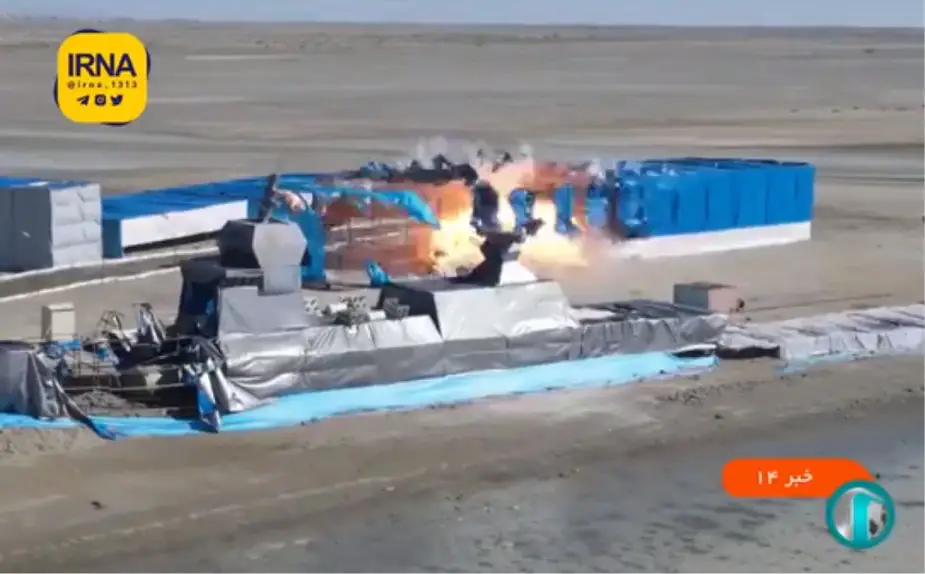Breaking news
Iran Hengam class landing ship Lavan conducts naval exercise against Israel Navy.
According to a tweet published by Mehdi H. on December 31, 2022, an Iranian loitering munition that could be an Ababil-2, was launched from the Hengam class landing ship IRIS Lavan to strike a false target resembling an Israeli Sa'ar 6 class corvette during an exercise.
Follow Navy Recognition on Google News at this link
 Iranian loitering munition destroying target during an exercise. (Picture source: Irna)
Iranian loitering munition destroying target during an exercise. (Picture source: Irna)
After the 1979 Islamic Revolution, Iran severed all diplomatic and commercial ties with Israel, and its theocratic government does not recognize the legitimacy of Israel as a state.
Since 1985, Iran and Israel have been engaged in an ongoing proxy conflict that has greatly affected the geopolitics of the Middle East, and has included direct military confrontations between Iranian and Israeli organizations, such as in the 2006 Lebanon War.
About the Ababil
The HESA Ababil is an Iranian family of single-engine multirole tactical unmanned aerial vehicles manufactured by Iran Aircraft Manufacturing Industrial Company (HESA).
The Ababil comes in two main lines, the Ababil-2 and the Ababil-3, of which the former has a number of variants. It is considered a long-range, low-technology drone.
The Ababil program was begun during the Iran–Iraq War. The Ababil-2, developed in the 1990s, has rudimentary surveillance capabilities and can be used as a loitering munition, but is mainly used as a target drone.
The larger and more capable Ababil-3, introduced in the 2000s, was designed for Intelligence, surveillance and reconnaissance use and has improved surveillance capabilities. Overall, the Ababil has been described "a pretty rough-and-ready system" because of its "cheap, simple, and ease of use."
The Ababil-2 and Ababil-3 have been widely exported to governments and paramilitaries in the Middle East and elsewhere. The Ababil has been used in the 2006 Lebanon War, the Iraq War, and the Sudanese, Syrian, Iraqi, and Yemeni civil wars.
The Ababil has a cylindrical fuselage, a sweptback vertical fin, and a pusher engine. It is powered by a simple two-bladed pusher propeller with a rear-mounted wing and a front canard for good stall, stability and maneuverability characteristics.
All variants have a range of over 100 km[citation needed] and all variants have all-metal construction, except for the Ababil-T, which is composite (fiberglass).





























